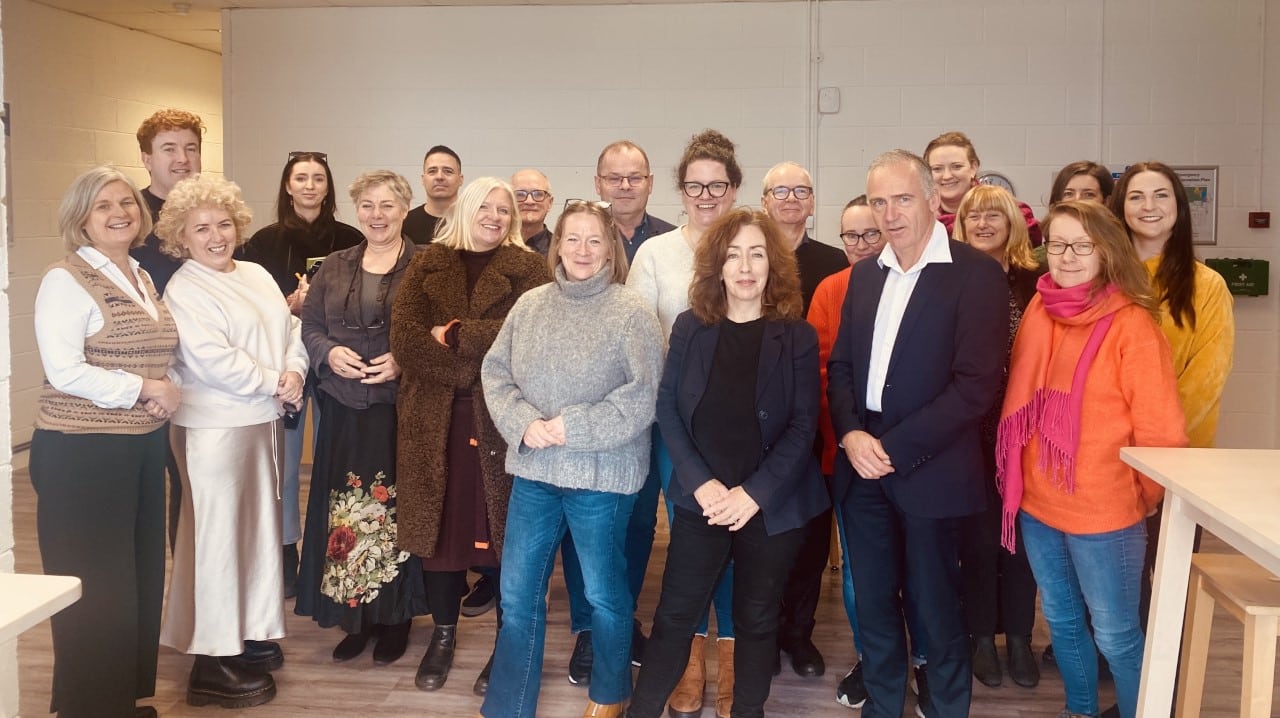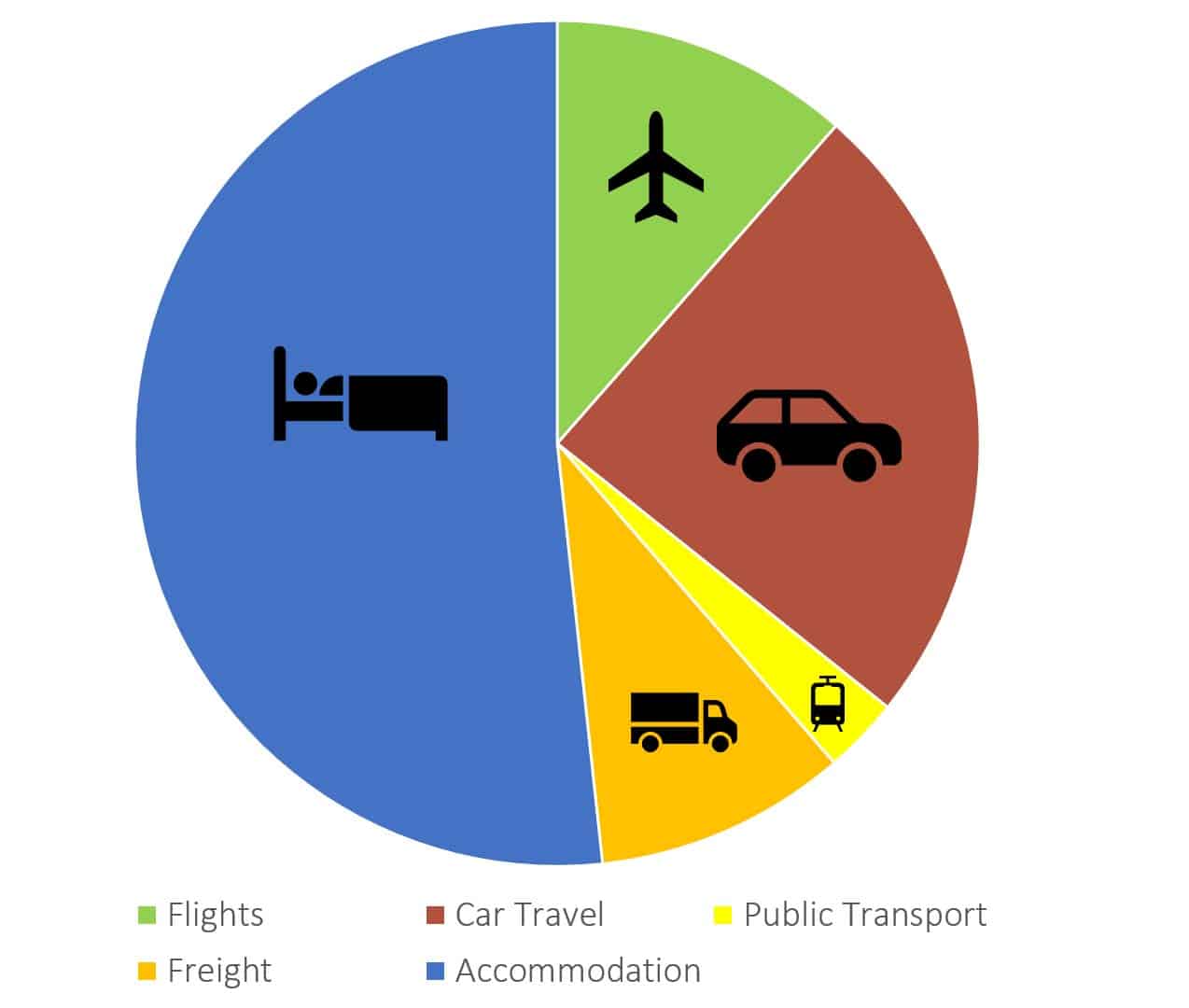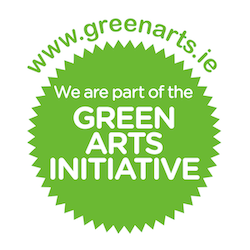
 Greener Touring:
Greener Touring:
The Greener Touring Project kicked off in September 2022, inspired by the Greening Arts Centres Project which had concluded earlier that year. Six touring companies signed up to take part: Ballet Ireland, Fishamble, Catherine Young Dance, Irish National Opera, Fidget Feet, and Druid.
The key aims of the Greener Touring project were:
- To get a good understanding of the environmental impacts of Irish performing arts touring, particularly the carbon footprint
- To use those findings to support touring companies to reduce their impacts.
- Findings will be used to advocate for ways in which touring companies could be supported and rewarded for embedding sustainability into tour planning.
- To share the project findings, experiences and recommendations with the wider arts community.
- There were no preconceived outcomes – this was a collaborative approach.
All of these companies have toured internationally. For some, it’s an occasional event, for others, it’s an important part of what they do. All tour nationally.
We wanted to measure the Green House Gas (GHG) or CO2e emissions associated with each company’s touring, essentially their carbon footprint.* Based on the work we had undertaken with venues, we knew that the energy usage (as opposed to waste) was going to be the biggest part of their impacts.
We were doing this work retrospectively so we knew that it would be difficult to collect some information, particularly relating to sets and costumes and the embedded carbon in those items. Travel, freight and accommodation were the key chunks of information we could measure. Energy usage for the actual performances falls under the remit of the venues rather than the touring companies. This was something that we would look at at a later date. In order to get a good overall grasp of the impacts, we analysed two tours for each company.
To kick off the project, we did sessions with each individual company; an introductory one with the main contacts, and a larger workshop session with as many of the staff team as could be mustered.
Finally, we ran a get-together in Dingle at the end of November. Under the guiding hand of Ben Twist from Creative Carbon Scotland, we thrashed out issues around touring, the complexities of managing a tour, what the possible solutions might be and what touring in 2050 might look like. We then worked closely with the individual companies to source the data around each tour. In summary, the project was a mixture of engaging with people, data collection and measuring, and brain storming around issues and solutions. 
A FEW CAVEATS:
We were not comparing like with like. Some of these productions were very sizeable, with large casts and crew, others were smaller shows. One was a large international venture, others were short national tours. Some companies brought in performers from abroad, others relied on a purely local cast. One production staged 36 performances and others performed as few as five times.
Gathering information retrospectively was complicated. Companies had not envisaged a carbon footprint analysis of their work when they had undertaken these tours. So, information was not gathered with a view to measuring its emissions – car travel, for example – but rather for the efficient running of the tour (routing and transport).
Conversion factors: Some conversion factors were very difficult to obtain. We relied heavily on the factors produced by the UK Government, known informally as the BEIS. We also got advice and support from Creative Carbon Scotland and Julie’s Bicycle. Obtaining accurate conversion factors for accommodation represents a challenge for the sector as accommodation is a key impact for most national tours. Currently, the absence of good conversion factors is a inhibitor to behavioural change – if we don’t have good data, how can we change for the better?
Limitations: As noted above, we limited our assessment to the emissions associated with accommodation, travel and transport – the three key impacts which are under the control of the touring companies (ie, they are responsible for these impacts and pay for them). We didn’t cover:
- Electricity and Heating: This did not fall within the remit of this study. Emissions associated with performances on a tour fall within the scope of the venues themselves as they control the heating and electricity and they pay those bills. We don’t yet have the kind of granular detail that would help us get a detailed understanding of the specific usage for one production – but we have a plan to address that.
- Set and Costumes: We didn’t analyse the embedded carbon in sets and costumes, rather we gathered data such as: any environmental sustainability approach in the design/commissioning process, whether sets and costumes were retained and reused or recycled, and what happened ultimately to those sets and costumes when they’re disposed of.
- Audience Travel: Similarly to electricity and heating, this does not fall within the direct emissions of the touring companies OR the venues, but rather is the responsibility of the individuals travelling. However, production companies and venues are very well placed to influence their audiences to travel sustainably. Another job we’re hoping to tackle!
We gathered details on the travel of all performers to and from each rehearsal and performance. Using the BEIS conversion factors, we converted that energy usage to CO2e.
So what stood out from the findings?

Flights: Where a company toured internationally, particularly if it was outside of Europe, the flights were far and away the biggest part of their carbon footprint. A return flight to the US is almost two tonnes of CO2e. One of the smaller tours we looked had emissions of just over six tonnes, or the equivalent of three return flights to the US.
Flights are an issue for many dance companies. Dancers are often real nomads – they are reliant on being mobile as work is not always readily available in the countries they live in. In the case of many national dance tours, some of the dancers are flown in from far-flung places. That can make a significant contribution to the carbon footprint of a touring show.
In one case, three performers taking long haul return flights to perform in an extensive national tour, amounted to almost one third of the total tour’s carbon footprint – and it was a big show with 19 performers, taking in a considerable number of venues.
International flights have a disproportionate effect on the overall tonnage of CO2e. One tour of the 12 examined was an international tour where the entire company flew some distance to perform in another country. If we remove those flights from the overall calculation, we get a better sense of the average impacts from national touring:

Accommodation: After flights, the next significant source of emissions, was the accommodation. And that comes with the caveat noted above – the absence of reliable conversion factors for Irish accommodation. Yet staying in a hotel or other accommodation does have a significant impact.
Using the current conversion factors available, there is no distinction between staying in a five star hotel with six people in one room, or one person staying in a small room in a budget hotel. Nor are there conversion factors for other accommodation – rented apartments, Air BnB etc.
We need to be incentivised to do things differently and we can’t do that if we don’t have the right information. Smaller companies tend to use rented accommodation as opposed to hotels, because it’s cheaper, and all companies tended to use rented accommodation where week-long rehearsals were taking place.
Car Travel vs Public Transport: Moving cast and crew around for tours depends on a range of factors. For some of the companies, particularly the smaller ones, travelling by car was felt to be the only viable option. This had the third biggest impact after flights and accommodation. Traveling by car gave performers the option of returning home if they lived within a reasonable distance of the venue, or if the tour was staggered over a number of weekends.
Car-pooling was prioritised by one company. Another company hired a bus to transport performers from one venue to another. Two participating company actively encouraged their performers to use public transport – mostly train, but also bus. Not surprisingly, the still limited public transport system came up as an issue, particularly where there were no late trains or buses in between the larger cities, for audience members as much as for performers.
Interestingly, no company has its own mini bus – electric or otherwise.
It’s very difficult to reduce travel CO2e for an Irish tour given the limited public transport options. Travel by public transport is therefore only a small part of the mileage for these companies, with one exception.
Unintended consequences:
- Drive home rather than stay overnight: More than one company wondered if it would be better to drive home after performing rather than clocking up the footprint of a night’s accommodation. It’s a reasonable question – and people have all kinds of other issues, caring responsibilities, etc. But bear in mind that any car travel is also releasing pollution both in terms of all kinds of nasty particulate matter from exhausts, and even more particulate matter from the wearing down of tyres and break/break pads. So whilst this approach may work better for some, it’s not a cleaner solution.
- More performances, fewer locations: Making the most out of each location on a tour is another solution – but that can also lead to an approach which rules out smaller locations potentially depriving audiences in those localities of the opportunity to attend good quality work.
Below is a summary of some of the possible solutions suggested to address the issues encountered during the project: Greener Touring Project – Possible Solutions

